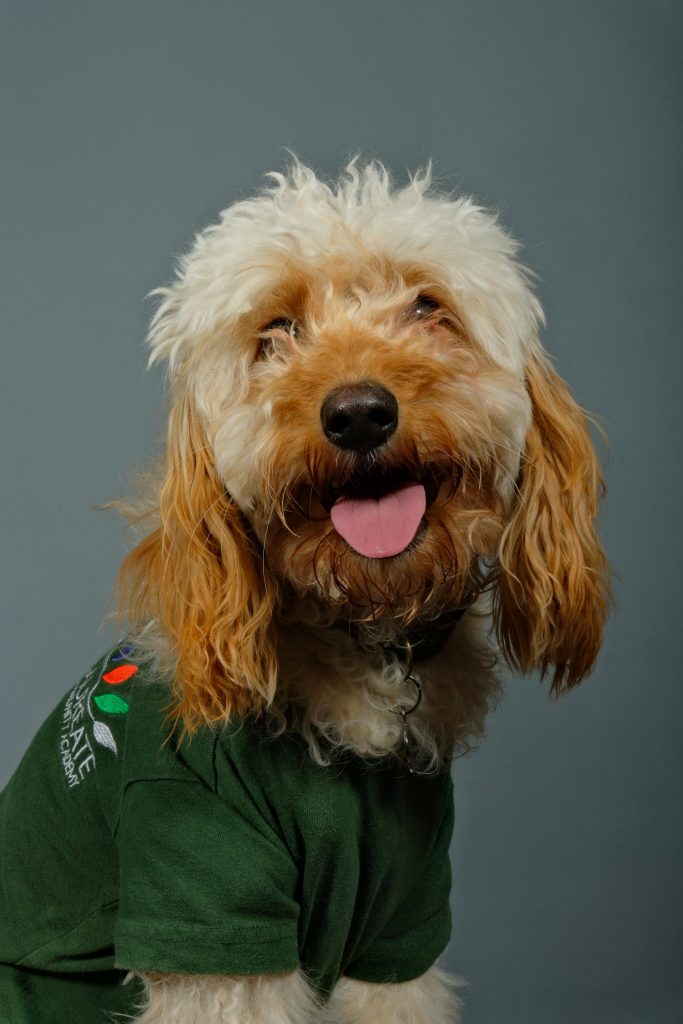
“Hello I’m Cali, the School Dog”.
We are very excited to introduce you to the newest member of our school team, our School Dog, Cali.
Cali is a friendly Cavapoo and she has been introduced as part of a new initiative to enhance children’s learning opportunities.
Cali has spent time in school getting used to this new environment and is now working with children. Cali will be listening to children read as well as providing opportunities for them to learn about responsibility, empathy, and animal care.
We believe that having a dog in school will foster a sense of calm and joy among our children and contribute positively to their overall well-being.
To ensure Cali’s presence is beneficial for all, she has been trained and has been carefully introduced to the school environment. Her breed means that she is naturally gentle, hypoallergic and she has already become a favourite among many of our staff.
What are the benefits of having a school dog?
Research studies have shown the benefits of therapy dogs in schools which include:
- Cognitive – companionship with a dog stimulates memory, problem-solving and game-playing
- Social – a dog provides a positive mutual topic for discussion, encourages responsibility, wellbeing and focused interaction with others
- Emotional – a school dog improves self-esteem, acceptance from others and lifts moods, often provoking laughter and fun. Dogs can also teach compassion and respect for other living things as well as relieving anxiety
- Physical – interaction with a furry friend reduces blood pressure, provides tactile stimulation, assists with pain management, gives motivation to move, walk and stimulates the senses
- Environmental – a dog in a school increases the sense of a family environment, with all of the above benefits continuing long after the school day is over.
There are already many ‘Pets as Therapy’ dogs working in schools throughout the UK. Reading to dogs has been proven to help children develop literacy skills and build confidence, through both the calming effect the dog’s presence has on children as well as the dog listening to children read without being judgemental or critical. This comforting environment helps to nurture children’s enthusiasm for reading and provides them with the confidence to read aloud.
Will Cali be properly cared for?
Cali is extremely well looked after. She lives with Mrs. Fisher (Year 6 Teacher) and her family. Mrs. Fisher, along with Mr. Perkins and Mrs. Dalton have introduce her to our environments, when she is working with our children she will always be accompanied by an adult.
Should the dog toilet on school premises it will be cleaned up by either Mrs. Fisher or the accompanying adult using animal waste bags and a disinfectant used to clean the area. Waste will then be carefully and suitably disposed of.
My child is scared of dogs
Some children may have had upsetting experiences and have a fear of dogs (or another animal). Cali will only be in contact with children whose parents have given their permission. However, Cali’s training has taught her to be calm and gentle around children; she has a very loving and gentle nature. Experience and research have shown that, with proper guidance and handling, children can learn to overcome their fear of animals and grow in respect and appreciation for them.
The school has a ‘no dogs’ policy
Schools comply with the Health and Safety at Work Act and are required to consider the act when agreeing to having animals on the school site. Other considerations such as Risk Assessments and Public Liability are acted on. It is true that most schools, including ours, have a general ‘no dogs’ policy, and with good reason. Allowing pets on site that have not been correctly risk assessed or without a specific purpose can lead to difficulties, as access to them is not managed or controlled by the school, or indeed accountable to it.
Therapy animals are managed and are introduced to the school over a period of time, starting with short orientation visits ensuring that the dogs is comfortable with the environment. They become familiar with the setting and children and are given time to adjust. Most importantly they are subject to a controlled risk assessment. Their role is directly managed and overseen by a staff member whilst general pets are not. It is key to remember that animals used as therapy or for other specific purpose are more than pets, they are in essence working animals with specific tasks.
We hope you will join us in welcoming Cali into our Laureate Community and embrace all that she has to offer the school.
